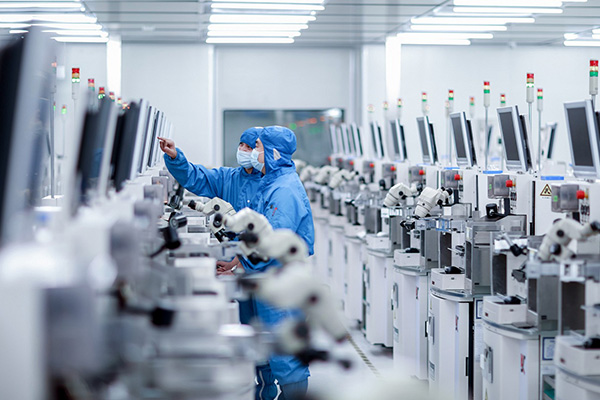What is a sensor?
Time:Oct 12, 2024 Author:Stone Read:0
A sensor is a device used to detect, measure and transmit physical, chemical or biological quantities. It can convert non-electrical signals into electrical signals, which facilitates data processing and control. The application range of sensors is very wide, covering almost all fields, such as industrial automation, environmental monitoring, medical diagnosis, smart home, etc.
Definition of sensor
A sensor is a device that can sense the signal of physical, chemical or biological quantities and convert it into an electrical signal. It consists of a sensitive element and a conversion element. The sensitive element is responsible for sensing the physical, chemical or biological quantity being measured, and the conversion element converts the signal sensed by the sensitive element into an electrical signal output.
A sensor is a device that can detect and respond to some type of input from the physical environment. The input can be light, heat, motion, humidity, pressure or any number of other environmental phenomena. The output is usually a signal that is converted to a human-readable display at the sensor location or transmitted electronically over a network for reading or further processing.
Sensors play a key role in the Internet of Things (IoT). They make it possible to create an ecosystem for collecting and processing data about a specific environment, making it easier and more efficient to monitor, manage, and control it. IoT sensors are used in homes, fields, cars, airplanes, industrial environments, and other settings. Sensors bridge the gap between the physical and logical worlds, acting as the eyes and ears of the computing infrastructure to analyze and process the data collected from the sensors.

How Sensors Work
The working principles of sensors can be divided into three categories: resistive, capacitive, and inductive.
Resistive sensors: use changes in resistance value to detect the physical, chemical, or biological quantity being measured. For example, RTD sensors can sense temperature changes and convert them into resistance changes.
Capacitive sensors: use changes in capacitance value to detect the physical, chemical, or biological quantity being measured. For example, a capacitive humidity sensor can sense humidity changes and convert them into capacitance changes.
Inductive sensors: Use changes in inductance to detect the measured physical, chemical or biological quantities. For example, an inductive displacement sensor can detect the displacement changes of an object and convert them into changes in inductance.
How are sensors classified?
Classified by detecting physical, chemical or biological quantities: can be divided into temperature sensors, humidity sensors, pressure sensors, displacement sensors, etc.
Classified by conversion method: can be divided into direct conversion type and indirect conversion type. The electrical signal output by the direct conversion sensor is linearly related to the measured physical, chemical or biological quantity, while the indirect conversion sensor needs to calculate the measured physical, chemical or biological quantity through a certain functional relationship.
Classified by manufacturing process: can be divided into structural type and physical property type. Structural sensors realize their functions through structural design, while physical sensors realize their functions through certain physical effects.
How to choose a sensor?
When choosing a suitable sensor, you need to consider the following factors:
Measurement range:Choose a suitable sensor according to the physical, chemical or biological quantity that needs to be measured.
Accuracy:Choose a sensor with appropriate accuracy according to actual needs.
Stability:Choose a sensor with good stability to ensure long-term reliability.
Durability:Choose a sensor with high durability to reduce the frequency of maintenance and replacement.
Environmental conditions:Consider the environmental conditions in which the sensor is located, such as temperature, humidity, electromagnetic interference, etc., and choose a sensor that is suitable for working under these conditions.
Price:Choose a sensor with a reasonable price on the premise of meeting actual needs.
In summary, a sensor is a device used to detect, measure and transmit physical, chemical or biological quantities, and is widely used in various fields. When choosing a suitable sensor, you need to consider several factors such as measurement range, accuracy, stability, durability, environmental conditions and price. Understanding these factors will help you select and use sensors correctly to achieve accurate measurement and control.
In short, a sensor is a device used to detect, measure and transmit physical, chemical or biological quantities, and is widely used in various fields. When choosing a suitable sensor, you need to consider several factors such as measurement range, accuracy, stability, durability, environmental conditions and price. Understanding these factors will help you select and use sensors correctly to accurately measure and control physical, chemical or biological signals.
Previous:What are the categories of pressure sensors and how to choose them? Next:What is a pressure sensor?
